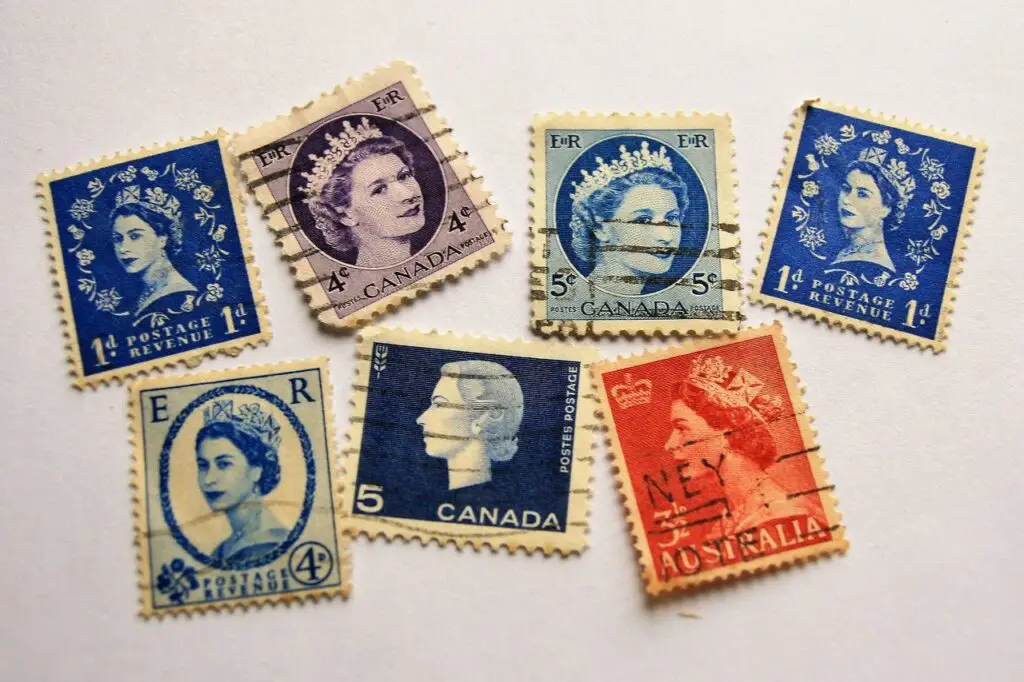Writing is one of the toughest parts of EFL/ESL teaching. While some students enjoy writing at length, the majority don’t, and it’s hard to inspire them to put pen to paper.
But it’s an important skill. Along with speaking, writing is one of the “active” English skills, which require the learner to produce language. It tests grammatical fluency, spelling, and confidence in forming sentences.

Why, then, do all EFL/ESL writing activities seem so boring? Random emails to a faceless so-called “friend” in the textbook, or an essay on something nobody’s interested in. If you’re as frustrated with those exercises as I am, you’re in luck. I’ve compiled a list of 9 exciting writing activities for your classroom.
Not all these activities will work for your students. Some require a certain level of English or general maturity. Pick ones to suit your class.
- Collaborative stories
- Pen Pals
- Bananagrams
- Letter to Santa, a local celebrity, or the Queen
- Written Narrative Telephone
- Character descriptions
- Letter Battleships
- Class newspaper or blog
- Countdown
1. Collaborative stories
Stories are always a good way to inspire English learners to write. Collaborative stories add fun and unpredictability while breaking the writing into manageable chunks.
Estimated time: 20-30 minutes per round
Energy level: 2/5
Materials: A4 paper (1 sheet per student) and writing materials
This is an activity for intermediate or advanced learners. The ability to structure simple, compound and complex sentences is required.
You can do it with as many students as you like. If you have a one-on-one class, you’ll need to write sentences in the story, too.
Instructions
Give each student a sheet of A4 paper.
Ask them all to write the first sentence of a story. It can be about anything. Give them around 1 minute to do this.
When they’re finished, they should pass the paper to the student to their left (or around the class in a way you see fit).
They then add a sentence to the story they receive. Again, allow 1 minute.
This can continue for as long as you like – passing the stories on until time runs out or you feel the stories coming to a close. When they’re done, students can read stories out loud.
TIPS:
- If your students struggle for ideas, give them some prompts for the first sentence.
- When you’re nearing the end of the activity, tell students to think of sentences to wrap up the story.
- Encourage them to read the previous sentences and stick to the narrative rather than changing the subject completely.
- As the stories get longer, you may need to give students a little more time so they can read what came before and think of a good next step.
2. Pen Pals
This is a tried and tested way of getting students invested in writing letters or emails.
Rather than a being a discrete class activity, this is a continuous process, with back-and-forth messages which students can write during class, or at home.

Here are three good websites for finding pen pals:
Alternatively, you can contact a school in your home country or an English-speaking nation and see if they’d be interested in linking up.
TIPS:
- Use email. You can get your students to type their messages, or take a photo/scan of their handwritten work.
- Search for multiple pen friends. Some may not keep up the exchange, so it could take a while to find a solid connection.
- With children, tell them not to write personal, identifying information, like their address, and make sure the parents are happy with you doing the activity.
3. Bananagrams
A quick, fun spelling activity which you can use as a game.

Estimated time: 5-15 minutes
Energy level: 3/5
Materials: Bananagrams game
To do this activity, you’ll need the bananagrams game which you can buy online for relatively cheap ($10-15).
If you don’t want to pay, or have a class with lots of students, you can just as easily print off and cut out some paper letters. I’ve even made a PDF for you to download.
How to play
There are a two main ways you can use Bananagrams for EFL/ESL.
1. Free word creation – give your students letters and challenge them to come up with as many words as possible, the longest words possible, or use unfamiliar letters like Q, Z and J.
2. Bananagrams main game – the rules come with the game or you can watch how to play in the video below. With less advanced students, I allow them to make words separate from each other rather than having to connect them all.
TIPS:
- If you’re printing the letters, consider using thicker paper (100 gsm or more) so the tiles don’t get damaged as easily.
- Join in the game yourself, creating words that may be useful, and showing more complex spellings.
4. Letter to Santa, a local celebrity, or the Queen
This activity adapts to the interests of your class.
If you’re with children, and it’s Christmas time, have them write a letter to Santa (if that’s part of their culture).
For added incentive, have your students write to someone who might actually respond. If you’re teaching ESL in an English-speaking country, writing to a local sportsperson or author might earn you a letter in return.
One person you can expect to get a response from is Queen Elizabeth II of England. No, I’m not joking. You may not get a direct response from Lizzie herself (although she does sometimes do this), but you should receive a reply from one of her secretaries.
Talk about motivation!
To learn her address, and how you should write to her, visit this royal website.
Having said all that, the Queen is getting old. At the time of writing (February 2022), she’s 95 years of age. When you’re reading this, she may sadly no longer be with us. If that is the case, you can write to the new monarch (King Charles), or any of the other royals!
5. Written Narrative Telephone
This is one of my favourite ideas, and it appears on a couple of other lists I’ve written: 9 Engaging Homework Ideas for EFL/ESL: No worksheets! and 9 EFL/ESL Games and Activities for Advanced Learners.
The main way of playing it is by speaking, but you can easily adapt it to practice writing.
Estimated time: 45-60 minutes
Energy level: 2/5
Materials: Plenty of paper and writing materials
You’ll need a class size of 4 or more to play this game.
How to play
One person starts as the storyteller. When you play for the first time, it’s a good idea that you, the teacher, start. The storyteller writes a short story (2-3 paragraphs).
Give the story to a student and allow them a few minutes to read it.
When they have finished reading, take the story away. They now have to rewrite the story as best they can in 5 minutes
Once the time is up, they should pass their story to the next student, who has a few minutes to read, then rewrites it again.
When it’s been around 5-6 students, stop the game and have students read out the stories.
While one student is reading and writing, the others aren’t doing anything. Instead of them sitting around with nothing to do, prepare multiple stories so you can have everyone doing something at the same time.
If you have a small class (4-6), prepare one story for each student, so they can start simultaneously and pass the stories around in a circle.
If you have a larger class, divide them into groups of 4-6 and follow the process above.
TIPS:
- When students gain confidence, they can become the storytellers.
- Set time limits and stick to them. It adds pressure, but means they have to focus hard. Remember to allow time for the final stories to be read out loud.
- Discourage criticism of getting details wrong.
- Collect all the stories at the end – you can share it with your students and laugh at the changes over time each repetition. You can also identify strengths and weaknesses in your students’ writing abilities.
6. Character descriptions
Writing descriptions is something even beginner students can do. There are ample opportunities for expanding vocabulary and developing written structures for intermediate and advanced learners, too.
Use characters from books, movies, TV shows or real life as prompts for written descriptions. Tailor them to fit your students’ interests.
Or encourage your learners to come up with their own characters. Let their imaginations run wild. If you’re going to do this, consider modelling an example beforehand to give your students ideas and some useful language.
Focus not only on physical appearance, but life story, personality, and mannerisms.
When you’ve got lots of amazing characters, why not write a story about them or stick them in a role-play situation?
Find out why I think role plays are a must for all EFL/ESL teachers by reading my article Why All EFL/ESL Teachers Should Use Role Play Activities.
7. Letter Battleships (Battlewords)
A fantastic way to practice letters and spelling. Battleships (or my customised version called Battlewords) is best with beginner and intermediate students, but not young children.
Estimated time: 20-30 minutes
Energy level: 2/5
Materials: Battlewords sheets (download below), writing materials
I recommend using A4 dry-erase pockets for this game. They’re clear plastic sheaths which you can put sheets inside, then write on in erasable markers. It means you can reuse the sheets and easily correct mistakes.
Below are the written rules, but I recommend you watch this video I made to see how to play.
How to play
The rules are just like in normal Battleships, but instead of ships, you have words. It’s a two player game.
Players write words in the bottom section of the sheet with each letter in its own square. The words can be the same lengths as traditional battleships (5, 4, 3, 3, 2), or have more and larger ships (8, 7, 6, 5, 5, 4, 3).
Players take it in turns to guess squares using the grid coordinates. If they get a hit, the player says what letter was in the square.
To win, a player must be able to say all the words on the other player’s grid.
TIPS:
- If the game is taking a long time, have players make 3 guesses on each turn rather than just one. You could also set a time limit.
- With lower-level students, make sure they’re confident with all the letters.
- The more words, the better. Only having a few results in lots of misses and frustration.
- For added challenge, give each student a sentence containing words of the right length. The other player not only has to find out the words but also determine what the sentence is.
To get the Battlewords basic sheet and powerpoint document for customisation, click the links:
And for more free games and activities, sign up to the Enchanted ESL Monthly Newsletter!
8. Class newspaper or blog
Writing newspaper articles exposes students to a different style of writing, and when combined in a collaborative project, provides a lot of motivation.
The great thing about newspapers is their diversity. You can have students write about things that interest them, for example:
- Local news
- Environment
- Politics
- Business
- Horoscopes
- Agony Aunts
- Sports
- Science and Technology
- Celebrities
- Weather
- Weddings/births/obituaries
- Lifestyle (cooking, DIY, etc.)
There’s something for everyone.
And when your class has completed writing and refining their articles, you can put them together and create physical copies to take home with pride.

Or, if you want to save paper and do things online, why not have a class news website where students contribute by posting articles?
You could turn this into a blog, where each person writes about what they’ve been doing, express their opinions on a matter, or just write about what interests them.
9. Countdown
Countdown is a television panel game in the UK which has been running since 1982. It practices spelling under pressure.
The game is for advanced students (although upper intermediates can manage) and appears on my article 9 EFL/ESL Games and Activities for Advanced Learners.
Estimated time: 3 minutes per round
Energy level: 1/5
Materials: Paper & Pen, this website: https://incoherency.co.uk/countdown/practice/
You can get a Countdown program on your phone, tablet or computer without needing to download anything by going to this website.
This video shows in more detail how to play.
How to play
The aim is to make the longest word you can by using the letters provided in just 30 seconds.
First, using the website app, let one of your students pick either “consonant” or “vowel” for each of the nine letters (4-5 of each usually works best). Everyone should write down the nine letters.
Start the timer, and while the music is playing, all the students should try to make the longest words possible. They can only use each letter once.
At the end of the 30 seconds, each player says how many letters they got, and then reveals their answer (shortest word first). The person with the longest word wins as many points as letters in their word. If they get a nine-letter word (very rare), they get double – so 18 points!
TIPS:
- If your students struggle, give them 60 seconds instead of 30. This is an option on the website linked above.
- Take part yourself. If anyone can beat the number of letters you get, give them extra points!
- Click the “Show Answers” button at the end to reveal the best possible words.
- Bonus: Click on the “Conundrum” button to get an instant 9-letter anagram and see who (if anyone) can get the word first.
Pens at the ready
I hope you’ve found inspiration from this list. Writing can be a tough thing to teach, but there’s no reason it shouldn’t be fun for both you and your students.
Adapt and modify these activities to suit your students. Find out what works for them and run with it, perhaps even coming up with your own activities!
If you’re looking for more games and activities, check out my other lists:
9 EFL/ESL Speaking Games & Activities Perfect for Beginners
9 EFL/ESL Games & Activities for Intermediate Learners
9 EFL/ESL Games and Activities for Advanced Learners
9 High Energy EFL/ESL Games for Boosting Vocabulary
9 Engaging Homework Ideas for EFL/ESL: No worksheets!
9 Exciting EFL/ESL Activities for Writing & Spelling
9 Fun EFL/ESL Games & Ideas With Standard Playing Cards
9 EFL/ESL Games With No Materials or Preparation Needed
9 EFL/ESL 5 Minute Games Every Teacher Needs to Know
9 Superb EFL/ESL Games & Activities Using Just Pen & Paper
9 Classy EFL/ESL Games & Activities for Adults (+ tips)
9 Confidence-Boosting EFL/ESL Speaking Games for All Levels
9 Exciting Flashcard Games for EFL/ESL Classes










